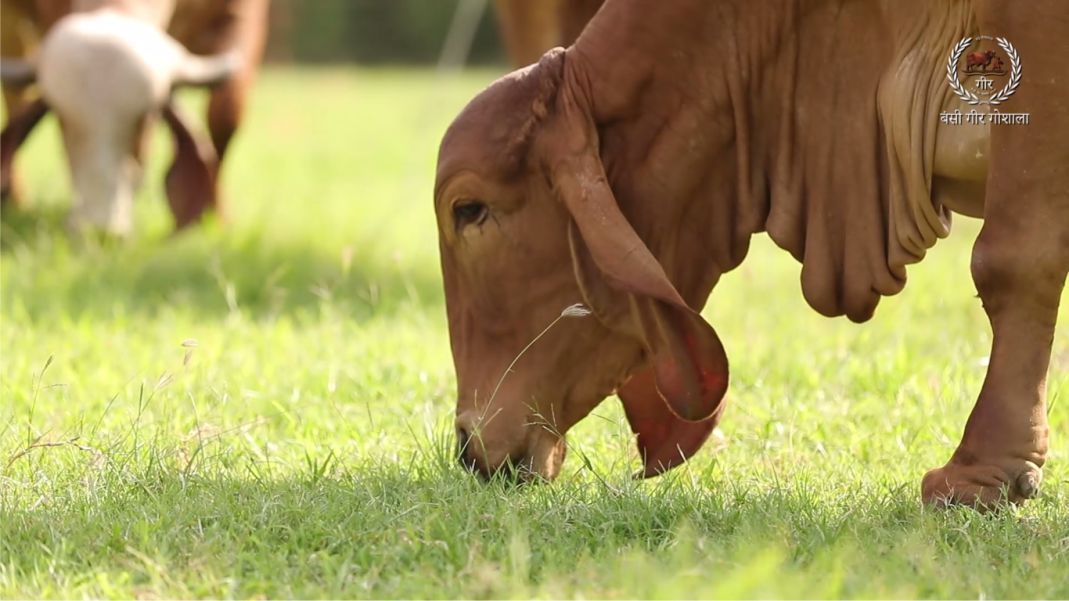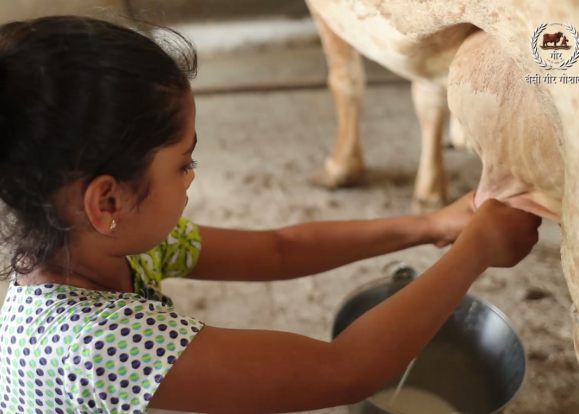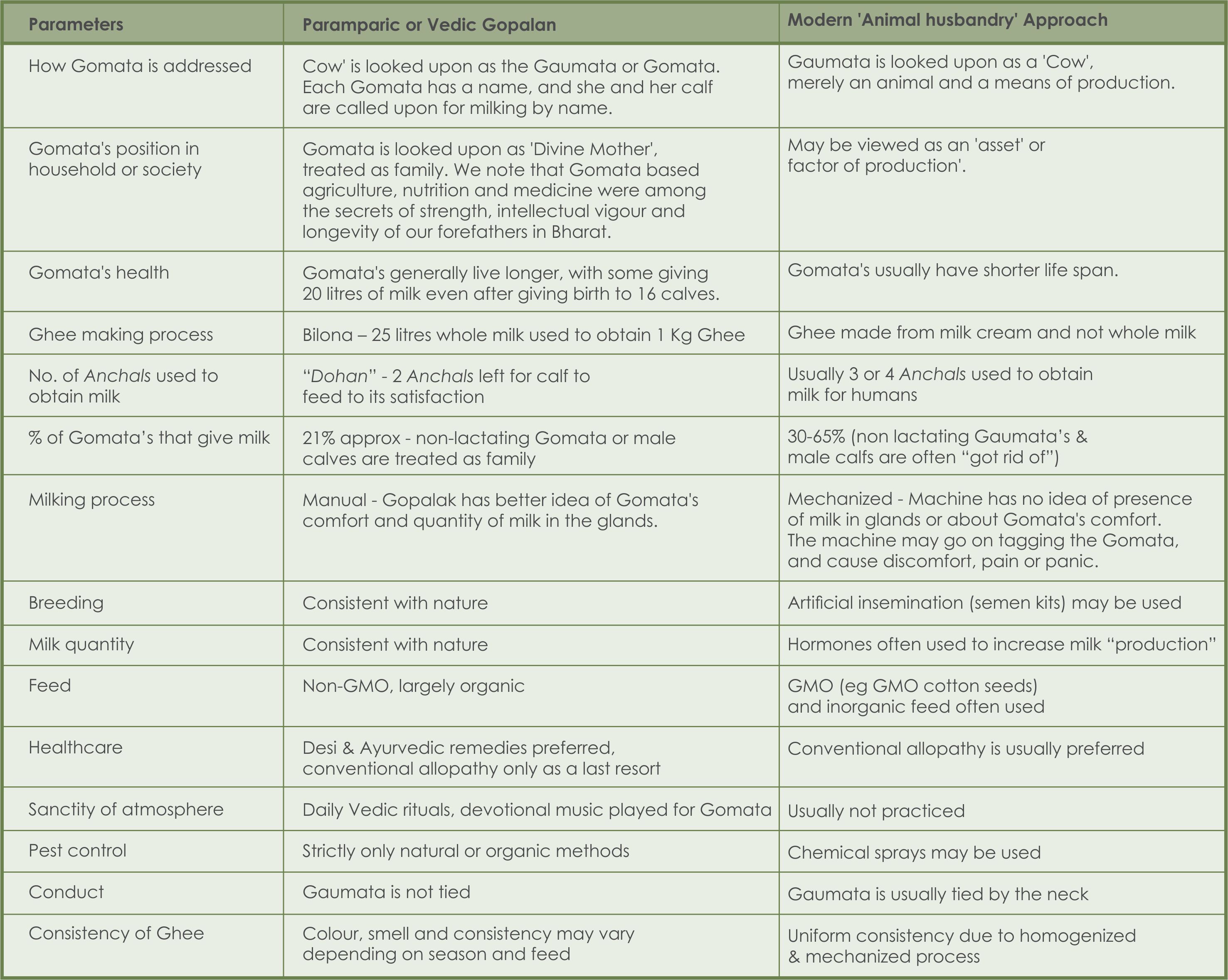By Bansi Gir Gauveda
We take you behind the scenes on what goes into making the Gir Ahinsak Gau Ghee. The process really starts by ensuring the Purity of Breed, continuing into Gau Seva or Vedic Gopalan and Dohan, and finally culminates into making artisan Ghee using the ancient Bilona method…
Bansi Gir Gaushala has emerged as a leading center of excellence and a demonstration project for ancient Vedic or paramparic system of Gopalan ('Cow' rearing) as well as Gau-Krishi ('Cow' based agriculture). The Gaushala was awarded the ‘Kamdhenu Award’ and declared the No.1 Gaushala of Bharat in 2017. One of the outcomes of The Gaushala’s dedicated service to the cause of Gaumata ('Cow' as the Divine Mother) is the Gir Ahinsak Gau Ghee, which is prepared using ancient Vedic processes. Ghee is considered sacred and potent in ancient Vedic rituals and Ayurveda. The benefits of Ghee for general health and well-being as described in the Shastras (ancient Bharatiya scriptures) are well known to modern day humanity. In the Veda’s, Ghee is described as the “best among all liquids” and it is also mentioned in the Shastra's that, “Ghee is the brilliance of Agni, milk the brilliance of Soma”.
However, what is less known or possibly often
ignored is the process from which
such a beneficial Ghee results, and this process should importantly contain
true Gau Seva (service of ‘Cow’ or Gaumata). Rig Veda mentions thus, “We
must regard the ‘Cow’ as our own Mother and serve Her to the best of our
abilities, keeping her happy in every way”. Atharva Ved also mentions thus, “The
‘Cow’ is Heaven, the ‘Cow’ is Earth, the ‘Cow’ is Vishnu, Lord of Life.”


Figure 1 - Gaumata has great spiritual significance in the Veda's - prayers and havan's are an integral part of Gopalan and Gau Sanskriti.
When Gaumatas are looked after as prescribed in the Shastras,
they are satisfied, healthy and happy. Their panchgavya products (milk,
curd, Ghee, Gomutra, Gomaya) become kalyankari (beneficial) and mangalkari
(auspicious). On the other hand, when Gaumatas are not looked after according
to Shastras, and our care is insensitive to their needs, they may become
unhappy and discontented, and their panchgavya products may
contain toxins as well as negative karmic consequences. Hence, Ghee obtained
from Gaumatas who are looked after under the ancient Vedic approach is
considered to be the most sacred and potent, as prescribed in the Shastras for
daily consumption, for use as medicine as well as for devotional rituals.
Now coming to the question which is often asked by our customers, “Why is Gir Ahinsak Gau Ghee so expensive?” The price of Gir Ahinsak Gau Ghee really reflects the Vedic standards of Gopalan (care) and Ghee making, starting with Purity of Breed, continuing into Gau Seva or Vedic Gopalan and Dohan, and culminating into making the Ghee using the Bilona method. Most of what you pay for this Ghee goes into 'Gau Seva' undertaken at the Gaushala.
Keeping the above philosophical background in mind, the following
para’s elaborate what Vedic Gopalan as prescribed in the Shastras entails, with
specific focus on its associated costs, the resulting benefits to Gaumata and
as a consequence to consumers of Gaumata’s panchgavya products.
1) Purity of Gir Breed
The Gaushala houses over 700 Gaumatas across 18 Gotra’s (closest English word being ‘lineage’) of Gir Gaumatas, a breed which has survived & prospered in Gujarat for thousands of years. These Gaumatas are pure breed Gir Gaumatas who aren’t cross bred with any other Bharatiya or foreign breed. Meticulous records are maintained and great care is taken to avoid in-breeding within the same lineage to preserve the Gaumatas genetic integrity and diversity. Very dedicated efforts are required to take care of such a special population of Gaumatas.
One example of how The Gaushala scrupulously maintains purity of breed is the 'Nandi Gir Yojana', in which extremely well-bred Nandi's are offered to trusted Gaushala's and villages of Bharat at no cost, with the objective of strengthening the Gir breed in Gujarat. In the market, well-bred Nandi's or their semen kits normally fetch a very high price. However, the Gaushala's philosophy is inspired by traditional Vedic approach towards Gomata which views them as family, and does not believe in trading in them. When Gaushala Nandi's go to other Gaushala's and villages, great care is taken to see that the Nandi does not stay at one location for more than 2 or 3 years, so that He does not end up breeding with His own offspring. This is critical to maintain the sanctity of Vedic approach and also has other scientific benefits as explained below.
Benefits –
a) Emphasis in Scriptures – Purity of breed is given great significance in scriptures, benefits of panchgavya products of specific sub-breeds of Gir Gaumata are also emphasized in detail.
b) Genetic Integrity - We also believe that efforts to preserve genetic diversity & integrity are extremely important to sustain Gaumatas health and avoid genetic deterioration in the long run.
c) Better Health - Pure local breed also means Gaumatas are genetically more resilient in local environmental & food conditions, making their panchgavya products far healthier to consume. Introduction of genetic material from the same family or 'next of kin' or even worsec from foreign breeds may be harmful in the long run.
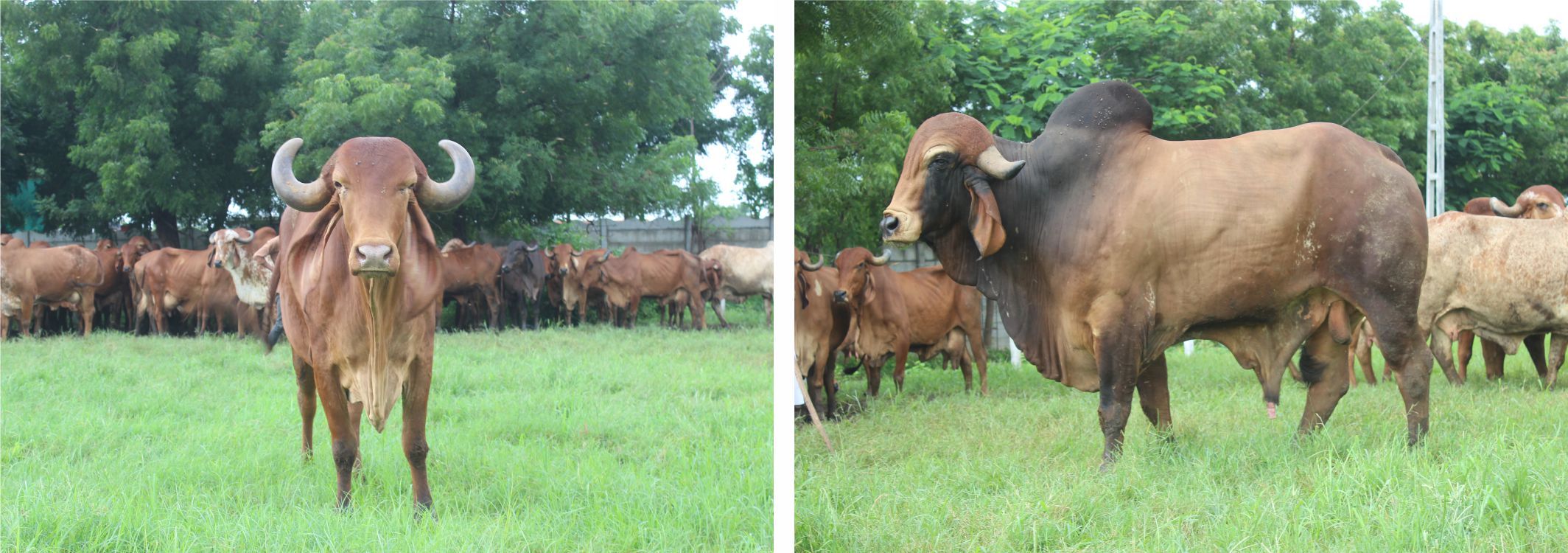
Figure 2 - Gaumata (L) and Nandi (R) - purity of breed is important to preserve genetic integrity and maintain Gaumata's health in the long run.
2) Vedic & Ahinsak (Non-exploitative) Gopalan
As explained earlier, we never sell or ‘get rid of’ older non-lactating Gaumatas or male calves. Her entire family is looked after as our own family. As a result, percentage of Gaumatas giving milk at our Gaushala at any point of time can be around 20% compared with 30-65% in conventional dairies. As a result, the costs of running the Gaushala and looking after Gaumatas is spread over a relatively smaller quantity of products for sale (Milk, Ghee and other products) compared with conventional dairies, but also has tremendous benefits.
Benefits –
a) Ethical & Emotional – We believe that the ethical, subtle & spiritual qualities of ghee that is an outcome of non-exploitative Gopalan is far superior. This is significant not only from an ethical, social & spiritual standpoint but for Gaumatas emotional well-being as well.
b) Modern research - also shows that Gaumatas are emotional beings, and they suffer when their family / friends are taken away from them. This can potentially introduce stress hormones in Her milk, or make Her more susceptible to illnesses in the long run.
c) Ancient scriptures - also testify to the fact that satisficed & happy Gaumatas have superior material, subtle & spiritual qualities. Ghee produced from the milk of such Gaumatas is ideally suited for daily consumption as well as for devotional rituals.
d) Social impact – Gaumatas grazing in urban areas is a common sight in modern Bharat. We believe that with higher social emphasis on developing grazing fields and looking after non-lactating Gaumatas we can collectively raise the ethical standards & attitude of society towards Gaumata.
3)
Pure, Ethical & non-GMO Feed
Our feed is ethically sourced and non-genetically modified as compared with cheaper conventional feed varieties. A few examples are given below for those who may not be very familiar with farming or Gopalan –
i) Pure & Ethical whole sorghum - purchased from farmers who grow this using a unique method of farming which is harmonious with Mother Nature. We have observed that our Gaumatas love this sorghum, especially the roots, so the whole plant is pulled out, washed & dried and offered to Gaumata.
ii) Richer grass varieties – We have extensively researched over 100 varieties of local indigenous grass and chosen a few (such as ‘jinjwa’ and ‘go-krupa’ in local parlance) for our grazing fields based on their nutritional value and Gaumatas tastes & preferences. Gaumatas enjoy grazing unrestricted in an open field that is nurtured with organic manure.
iii) Organic Farmlands for Gaumata - We have developed special farming methods and an agricultural bacterial culture with over 40 different strains of beneficial bacteria. Using these, we also grow various different types of fresh organic greens for Gaumata in our own farmlands, rather than buying cheaper quality agricultural waste from outside.
iv) Non-GMO Cotton - Taking another example, it is common in conventional dairy industry to use cheaper GMO cotton seeds like BT cotton to prepare dry feeds for Gaumata. The Gaushala makes great efforts to source the more expensive desi (traditional) varieties of non-GMO cotton seeds to prepare special Gaumata feeds.
v) Natural supplementation – As far as possible, the Gaushala uses natural methods of supplementation, for eg chuna or calcium carbonate or Ayurvedic herbs for calcium supplementation, jaggery and rock salt for other minerals. This also satisfies Gaumata’s desire to eat sweet or salty tasting foods.
Figure 3 - Gaumata's thrive on a variety of pure foods that include grazing vegetation, fresh greens, dried feeds and specially prepared pellets called "daan" in Gopalan lingo which contain grains, seeds, herbs, etc.
Benefits –
a) Eating Pure & Ethical - is advisable for not just human beings for also for Gaumata and other living beings. The Gaushala also makes great efforts to help farmers turn to pure & ethical methods of farming by investing in the development of Gaumata based Agricultural technologies, freely sharing its knowledge base and materials.
b) Non GMO Benefits - In the past, we have noticed adverse effects of GMO cotton seeds on Gaumatas health, particularly during pregnancy. Desi varieties on the other hand improve energy & health.
c) Variety of Nutrients - Greater variety of organic food, which is sourced from organic grazing fields and farmlands helps to further improve Gaumatas health in the long run.
4) Ayurvedic Herbs in Feeds
Ayurveda is the ‘science of life’ and is greatly beneficial to maintain and enhance Gaumatas health. We add various Ayurvedic herbs of rich medicinal qualities to Gaumatas dry feed. These herbs vary based on season and individual constitution of each Gaumata.
Benefits –
a) Regulates Body Heat - For example, there are specific herbs that provide a cooling effect to the body during pregnancy & lactation, and others to improve “urja” (closest English word being body heat or fire element) during the colder months of winter.
b) Other Benefits - Herbs chosen under the guidance of experienced Ayurvedacharya’s and added to dry feed can help to provide specific health benefits to Gaumata such as improved immunity, calcium absorption, digestion, rejuvenation after pregnancy, illness or during older age, etc.
5)
Dohan - Non-Exploitative Process of Milking
We also strictly adhere to the ancient Bharatiya Vedic tradition of ‘dohan’, where calf is allowed to feed to satisfaction from two ‘Anchals’, while the remaining two are used to obtain milk for other living beings. We believe this may reduce milk yields temporarily but offers other benefits. This is consistent with ancient traditions followed in Bharat since centuries.
At the Gaushala, each Gaumata has a name. When it is time for Dohan, Gopalaks at the Gaushala call out the Gaumata’s by their respective names. As the Gaumata comes forward for the Dohan, even calves as young as a week recognize their Mother’s name and come forward to participate in the Dohan.
Benefits –
a) Happier Gaumata - Leads to Gaumatas being happier when they know that their calf is fed. As explained earlier, the hormonal qualities of such milk is better compared to when Gaumata is stressed.
b) Healthier Gaumata – In the long run, subsequent generations of Gaumatas also being healthier having consumed their Mother’s milk during infancy and youth.
c) Subtle, Karmic & Spiritual Qualities – As a consequence of Gaumata’s being happy & healthy due to the non-exploitative relationship and dohan, we believe that such a milk or ghee has far better subtle, karmic and spiritual qualities as envisaged in the Veda’s. 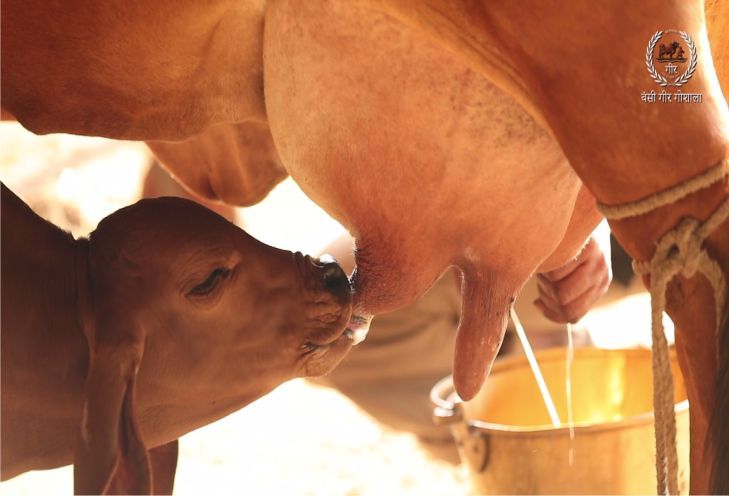

Figure 4 - Dohan allows the calf to feed from two 'anchals', keeping Gaumata's happier & healthier, lending better ethical & spiritual qualities to the Ghee.
6) 3,000 year old Bilona method of Ghee Making
3,000 year old Bharatiya bilona method of ghee preparation means we use whole milk and not just milk cream to prepare ghee. As a result, each liter of ghee requires about 25-35 liters of milk, in contrast to conventional dairy ghee which is made from cream & hence significantly cheaper. The cooking is slower which takes more time and uses wood fire instead of natural gas flame. The container in which Ghee is made is a traditional brass container which has great significance in Ayurveda.


Figure 5 - Slow wood fired flame ensures maximum nutrient retention & better flavour, while being consistent with Vedic emphasis on using 'sur dhatu'. Brass container also lends other health benefits to the Ghee.
Benefits –
a) Emphasis in Ayurveda - So the ghee contains the essence of whole milk rather than only cream. Such ghee is greatly emphasized in Ayurveda as a potent tonic and medicine. Such a ghee improves ‘sattva’ (Truth or Purity in the Being), digestion, strength and intelligence, as per Ayurveda.
b) Higher Nutrition - Slower flame retains most of the nutrients in the ghee in contrast to higher temperatures where more nutrients are lost. Modern research also proves that Ghee contains many beneficial fatty acids which improve the functioning of the brain, joints, etc.
c) Spiritual Significance – In the Veda’s fuel which are sourced from regions that reside above the ground have been given great significance, particularly gomaya and wood. These fuels are classified under “sur dhatu” vs fuels which are sourced from the below the ground & classified as “asur dhatu”. Modern humanity has also realized the significance of bio-renewal sources of energy such as solar and bio gas which are sourced from regions residing above the ground.
d) Richer Flavour - We believe Ghee has a richer flavor when cooked over wooden fire, which is consistent with Vedic traditions. Modern Research also proves that wood fired cooking flames generate hundreds of different flavor enhancing compounds which are simply absent from conventional gas based or electric flames.
e) Health benefits from brass container - Brass or Pittal is an important 'Misra Loha' or an alloy of copper and zinc, both of which are recognized by modern science as essential minerals. Maharshi Charaka used Pittal extensively to make medicines used to treat a variety of diseases including worm infestation, low hemoglobin levels and skin diseases.
Final Note on Gau Seva
Finally, the price paid by the consumers is spent to sustain Gau Seva, or the service of Gaumata as described in this article. The Gaushala works for the revival of Gauchars (grazing fields), help other Gopalaks and revive organic Gau-Krishi (Gaumata based Agriculture). When you buy this Ghee, you don’t just buy a pristine high quality Ayurvedic food ingredient for your kitchen, but also help in serving Gaumata and contribute to the revival of Vedic standards of Gopalan.
Figure 6 - Vedic Gopalan is an approach which regards the Gaumata as the Divine Mother to be worshiped, adored and loved as family.
We also believe that there is a need for society to empathize with hard working farmers who undertake Vedic Gopalan and Organic Farming. The generally low pricing expectations of the society for products of Gopalan and Agriculture puts economic pressure on farmers to cut costs, and causes great harm to the quality of panchgavya & farm products available in the market, even while higher priced processed foods remain popular among consumers.

